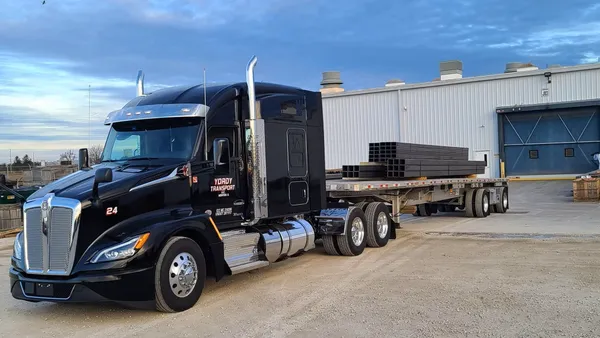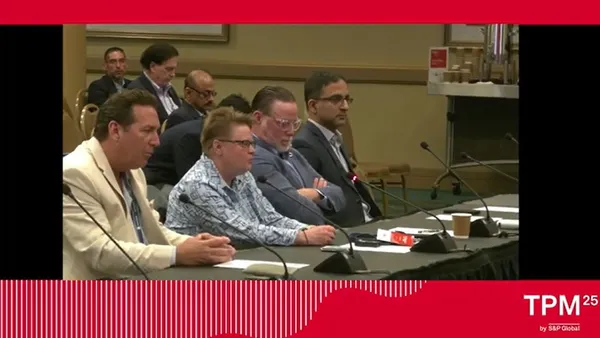Dive Brief:
- Morgan Stanley predicted the TL sector will end 2021 "significantly above 2017 as back-to-school, peak season and supply shortages keep the market on the boil." The latter half of 2017 preceded the 2018 freight boom.
- The analyst firm's forecast continues to "expect an end to 2021 sufficiently above 2017 and 2020." Morgan Stanley officials also said "the cycle has more runway to go, supported by both demand tailwinds and supply tailwinds."
- Driving the metrics, according to TL leaders surveyed, is an increase in TL demand while TL supply dropped. Morgan Stanley also cited ACT Research's finding that for July, preliminary Class 8 orders were up 27% YoY. FTR reported that truck supply is running an estimated 25% behind demand.
Class 8 net truck orders in North America
Dive Insight:
Morgan Stanley's TL report indicates there will likely be no abatement in freight demand and shipper requests through the end of 2021. Carriers are reporting a surge in demand as Labor Day approaches, with little protest from shippers as rates rise.
"Demand is overwhelming," an anonymous carrier official told Morgan Stanley for its sentiment index. "Pricing raised across the board with no pushback. Smart shippers are asking about locking in fixed [and] variable dedicated agreements with us."
Several carriers told Morgan Stanley that the driver shortage was one of the culprits behind increased costs. One carrier official surveyed noted the worker shortage goes beyond trucking.
"I don't think I have ever seen as many signs for businesses looking for workers, let alone driving jobs," the carrier official told Morgan Stanley. "We have a long way to go before the driver force can handle the amount of goods that need to be moved right now."
Buttressing the strong freight demand is an overall strength in the U.S. economy, according to ACT Research. On Monday, President and Senior Analyst Kenny Vieth said in a news release that bullish forecasts for the remainder of 2021 and 2022 are based on "solid freight metrics and consumers who continue to spend at relatively higher rates on goods, as well as millennial demographics, record savings and wealth, and pent-up housing demand that all bode well for continued strength in freight-related economic activity."
Vieth said he expects U.S. gross domestic product will grow at 6.2% in 2021 and 2022. Those strong numbers are likely what brought out Morgan Stanley's mention of the 2018 freight boom, the industry's last freight boom, which resulted in industry revenues jumping 13.8% from 2017, from $700.1 billion in 2017 to $796.7 billion in 2018, according to the American Trucking Associations.
Carriers, thus, will continue to put equipment orders in, to make sure they have the newest equipment. Vieth said medium-duty, heavy-duty and trailer backlogs "are essentially filled into 2022, with backlog-to-build ratios well above traditional ranges and inventories below traditional thresholds."
Eventually, though, the market madness will find natural balance, thanks to the laws of economics, one broker said.
"It is still tight, and there are pockets of insanity driven by undisciplined players," an anonymous broker told Morgan Stanley. "The invisible hand will intercede."
This story was first published in our sister publication, Transport Dive. Sign up here.















